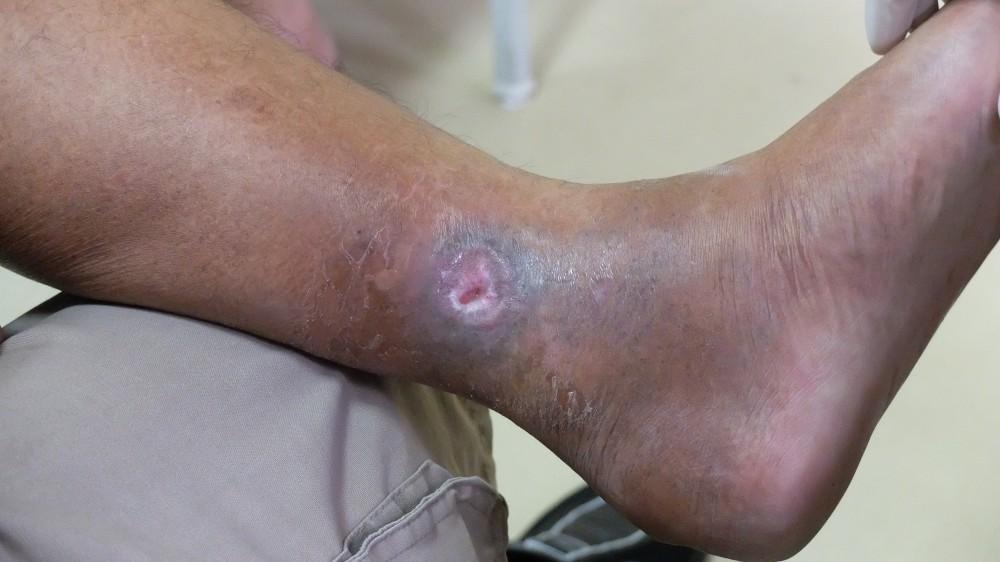
5 Tips for Strengthening Your Ankle After a Sprain

When you sprain your ankle, the pain lets you know! Sprained ankles, some of the most common types of sports injuries, can be both uncomfortable and restrictive. A sprained ankle can keep you from enjoying free and easy motion for days or weeks while your injured joint recovers from a stumble or an uneven landing.
The team at The Foot Care Group of Libertyville, Illinois, led by board-certified podiatrist Steven Sharlin, DPM, can support you through a sprained ankle. However, after you’ve injured an ankle in this way, you may be prone to subsequent sprains in the future.
If you take these helpful steps to strengthen and support your ankle joint, you can protect yourself from further injuries, and keep moving forward with confidence on both your feet.
1. Work on your core and overall balance
Trips and falls put the multiple tendons and ligaments of your ankle joint at risk. When you sprain an ankle, you stretch or tear these components of your ankle joint, leading to pain and potential debility.
If you can increase your balance and core strength, you may be able to avoid risky falls in the first place. You can build up your core strength and balance by repeating exercises like situps, lying on your back and curling upward, or planks, raising yourself up on your arms and holding your body in a straight line.
Bridge exercises, also performed while lying on your back, can also be helpful in strengthening your core. With your knees bent, raise your hips off the floor until they’re aligned with your knees and shoulders, and hold the position for several seconds, then rest and repeat.
2. Increase your leg strength
Your leg muscles can take a lot of pressure off of your ankles. So, to support an ankle after an injury, work on increasing your leg strength and control, as well.
Try repeated calf raises, standing with your feet placed a hip-width apart, then shifting your weight to your toes so that you can lift your heels up off the ground. Reps of shin raises, a similar exercise where you shift onto your heels to lift up your toes, are also helpful in strengthening your legs and increasing your control of your movements.
3. Explore your ankle joint’s range
As your ankle sprain heals, it’s important for you to work the muscles and tendons that make up your ankles and legs. Try this exercise: each day, lying down on your back with your legs stretching upwards, complete 10 sets of stretches. Hold the stretch for at least three seconds, then flex and repeat.
You can also try exercises like writing each letter of the alphabet with your feet, or rotating your ankles in clockwise and counterclockwise circles.
4. Support your ankles with taping
You might need to use a specialized taping pattern or brace to support your ankle during activity after a sprain. With high quality athletic tape, you can redistribute the forces that put pressure on your ankle joint, protecting you from any further injury.
Dr. Sharlin may also be able to recommend custom orthotics to support your foot and ankle after an injury.
5. Prepare before exercising
It’s always a good idea to prepare your body before exercising – all the more so if you’re recovering from an ankle sprain. Take time to limber up by stretching, flexing, and rotating your ankle joints. Then, you can work out as hard as you want to, without shocking a healing ankle.
If you need care during or after an ankle sprain, get in touch with The Foot Care Group today. You can schedule an appointment at our Hinsdale, Libertyville, and Streeterville, Chicago, Illinois offices with our online tool, or give us a call now to book your session.
You Might Also Enjoy...


Can Hammertoes Be Corrected with Orthotics?

Can Cryotherapy Get Rid of My Plantar Warts?

I'm Embarrassed About My Toenail Fungus: What Can Help?

5 Bothersome Complications of Untreated Hammertoe

